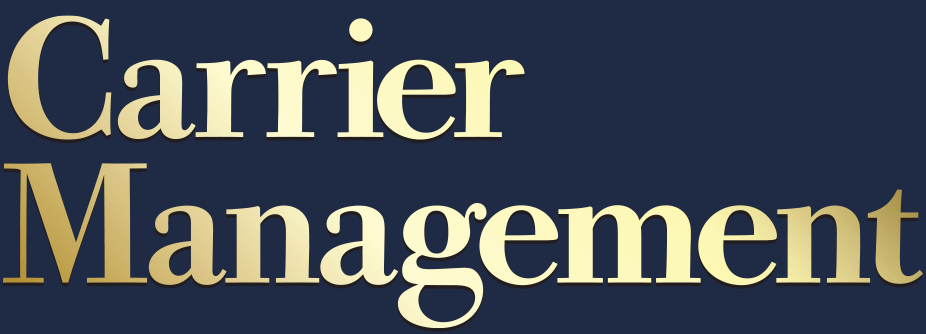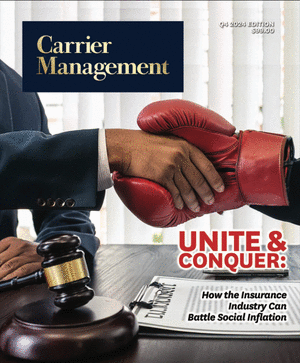In a competitive insurance landscape, delivering the best customer experience goes beyond simply processing claims. It means creating efficiency for everyone in the value chain. That’s according to panelists at InsurTech NY’s Spring Conference, held in New York City earlier this month.
“When we think about the customer experience, it’s really the experience for everyone in the value chain,” said Joe Welch, senior account manager for the API Group at Vonage, a N.J.-headquartered provider of unified communications for insurance. “So, it could be an end policyholder, or it could also be an agent, because basically what we want to provide is a single, unified, seamless communication.”

Josh Levine, founder and CEO at Cake & Arrow, agreed, adding that it’s important to keep in mind that the end-customer experience is simply a product of everything that happens through the entire value chain. Cake & Arrow is a New York-based design agency that helps insurance companies design digital customer experiences and agent portals.
“If you follow the money, the policyholder is the customer, but the reality is that that end-customer experience is the amalgamation of everyone’s experience that leads up to that,” he said. “And that is brokers, agents, underwriters, adjusters—all of them. So really, someone said it takes a village to get somebody covered, and it’s so true… In a way, I think the whole ecosystem is the customer, and people need to feel valued throughout that process.”
Communication Fragmentation
This means that if one element in the chain breaks—whether it’s underwriting or the agent portal or workflow—it can impact the entire customer experience. Levine said he sees one of the biggest challenges to this is fragmented communication.
“Consumers, you get messages from your insurance company from all different numbers. You get one for billing, one for claims and one for policy,” he said. “So, what happens is it creates inconsistency and confusion about how best to engage the brand, and even when the brand’s reaching out to you, you really don’t know who that number belongs to, especially in this day and age with fraud.”
To combat this fragmentation, it’s important for insurers to examine how to streamline their operating models. This includes building a cohesive team with subject matter experts who can handle claims with the right sophistication level while maintaining a single point of contact for the customer, said David Vanalek, chief legal and compliance officer and corporate secretary at Richmond National, a Virginia-based P/C insurer with a focus on small and midsize businesses.

“Many policyholders want just one individual to talk to about their various claims,” he said. “Sometimes in large organizations, if an insured has five or six or seven different claims, they’re spread across five or six or seven different individuals at that organization. These are relatively simple things, but it basically comes down to providing that core level of service and creating that centralized approach to provide a better outcome.”
Personalized Experience
Another communication challenge is personalization, Levine said.
“Two-way messaging is very personal. It’s how we communicate in our daily lives, and as a consumer, you want to be able to communicate with your carrier that way,” he said. “So, by enabling two-way messaging or creating a very personal experience, it’s immediate, it’s actionable and it’s something that the consumer values very much.”
This is demonstrated in the way that consumers engage in their day-to-day lives, he said, pointing to Cake & Arrow’s own research as an example.
“The thing we see in our research is that over and over, people aren’t comparing their insurance experiences with their previous, let’s say, crappy insurance experience,” he said. “They’re comparing it to their experience with day-to-day apps. They’re comparing it to using Duolingo or Uber, or their amazing smooth banking app. So, I think having that in mind when it comes to making that connection really is critical when it comes to simplicity, personalization and all these things.”
Another critical piece of this personalization puzzle is targeting and validating the right customer base, said Andrea Collins, chief marketing officer at Hippo, a California-headquartered homeowners InsurTech.

“A great example of this is we found a couple of years ago that new homeowners or homeowners of brand new homes—zero to five-year homes—were most interested in keeping their homes updated, on track, making sure that they had all the right services regularly, warranty insurance, all of the different pieces to maintain that new home smell,” she said.
She said Hippo worked with some of the largest home builders to embed its product into the home buying experience to uphold its vision for providing customers with proactive home insurance.
In 2019, the InsurTech teamed up with Lennar, one of the largest homebuilders in the U.S., to offer comprehensive coverage for new homeowners. In 2022, Hippo was the chosen insurer for 75 percent of Lennar’s new homes sold, and during the past five years, Hippo has helped to facilitate more than 200,000 new home closings nationwide. The InsurTech is now focusing its efforts on embedded insurance to improve insurance access for customers purchasing new homes, according to a statement on its website.
“As we continue to develop further segments and refine our products to meet those customer needs, we create these really regular checkpoints to make sure that things like our Hippo home insurance app are being used and useful and that our regular communications with customers continue to drive through that proactive home maintenance message,” Collins said.
Levine said the best way to ensure this customer alignment is to begin with a foundational understanding of the customer ecosystem—who the customers are, what they need, and on whom they’re leaning when making decisions.
“You must build real empathy across teams, marketing and product operations,” he said. “When that understanding becomes the north star—that understanding of what customers need, what they feel by all parties—things will naturally start to align. Sure, there are centralized design systems and messaging frameworks, and I can geek out on all that, but at the end of the day, those are just tools you have to create that alignment. People are changing hearts and minds so that when they do use the tools, they’re using it with the right intent to be in service of the customer needs.”





















 The Future of Knowledge in Insurance: From Training to AI-Powered Productivity
The Future of Knowledge in Insurance: From Training to AI-Powered Productivity  Why Insurance Telematics Integrations Fail
Why Insurance Telematics Integrations Fail  Demystifying the Data Landscape: Lake, Warehouse and Lakehouse Explained
Demystifying the Data Landscape: Lake, Warehouse and Lakehouse Explained  How One MGU Grew Fivefold When Capacity Fled Cat-Prone Property Markets
How One MGU Grew Fivefold When Capacity Fled Cat-Prone Property Markets 
